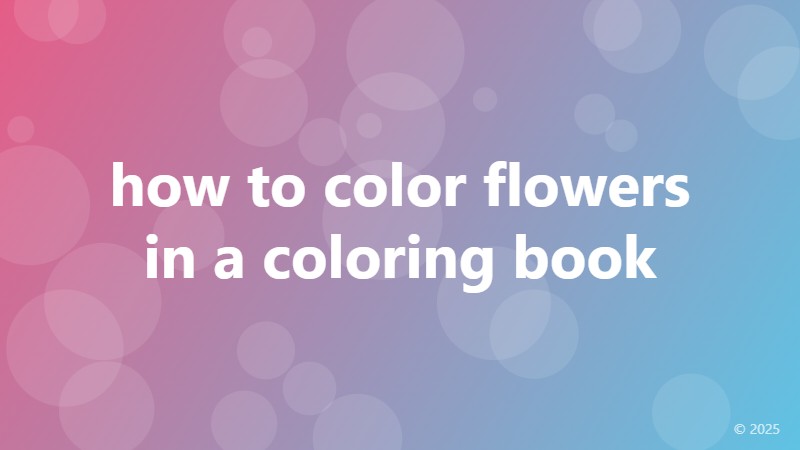how to color flowers in a coloring book

Getting Started with Coloring Flowers in a Coloring Book
Coloring flowers in a coloring book can be a fun and creative activity for people of all ages. With a few simple steps and some basic coloring tools, you can bring beautiful flowers to life on the page. In this article, we'll take you through a step-by-step guide on how to color flowers in a coloring book, from choosing the right colors to adding the final touches.
Choosing the Right Colors for Your Flowers
When it comes to coloring flowers, the first step is to choose the right colors. You can use a variety of colors to create a realistic or imaginative look, depending on your personal preference. For a realistic look, consider using colors that are found in nature, such as shades of pink, yellow, blue, and purple. If you want to add a touch of imagination to your flowers, you can use brighter, bolder colors like orange, green, and red.
It's also a good idea to consider the type of flower you're coloring. For example, roses are typically colored red or pink, while daisies are often yellow or white. You can also use reference images to get an idea of the natural colors of different types of flowers.
Basic Coloring Techniques for Flowers
Once you've chosen your colors, it's time to start coloring! Here are a few basic techniques to get you started:
1. Layering: Start with a light layer of color and gradually build up to darker shades. This will help create depth and dimension in your flowers.
2. Blending: Use a blending tool or a colorless marker to merge different colors together. This is especially useful for creating soft, gradient-like effects in the petals.
3. Shading: Add shadows to your flowers by coloring in small, curved lines. This will help create a sense of depth and dimension.
Adding Details and Textures to Your Flowers
Once you've colored in the main parts of your flowers, it's time to add some details and textures. Here are a few ideas:
1. Center of the flower: Use a small brush or a fine-tip marker to add details to the center of the flower, such as the stamens or the center of a daisy.
2. Petals: Add texture to your petals by coloring in small, curved lines or using a pattern of dots and dashes.
3. Stems and leaves: Use a green marker or colored pencil to add stems and leaves to your flowers. You can also add some texture to the stems and leaves using short, curved lines.
Tips and Variations for Coloring Flowers
Here are a few more tips and variations to help you take your flower coloring to the next level:
1. Experiment with different tools: Try using different types of markers, colored pencils, or even watercolors to create unique effects.
2. Add some background: Consider adding a simple background to your flowers, such as a sky blue or a soft, gradient-like effect.
3. Get creative with patterns: Use patterns like stripes, polka dots, or chevrons to add some visual interest to your flowers.
With these simple steps and techniques, you can create beautiful, vibrant flowers in your coloring book. So grab your markers and get started – and don't be afraid to experiment and try new things!